Entrepreneurship – from ideas to reality (Open University)
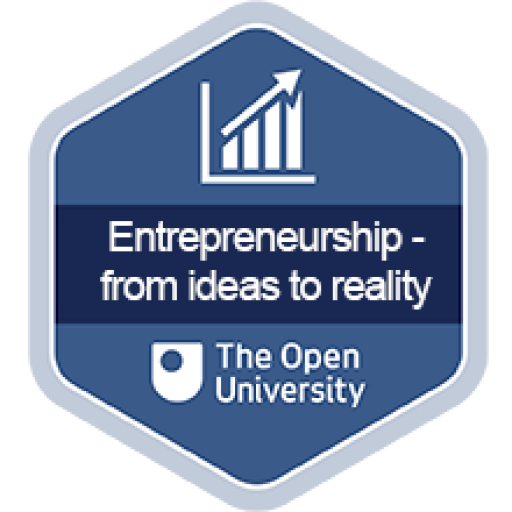
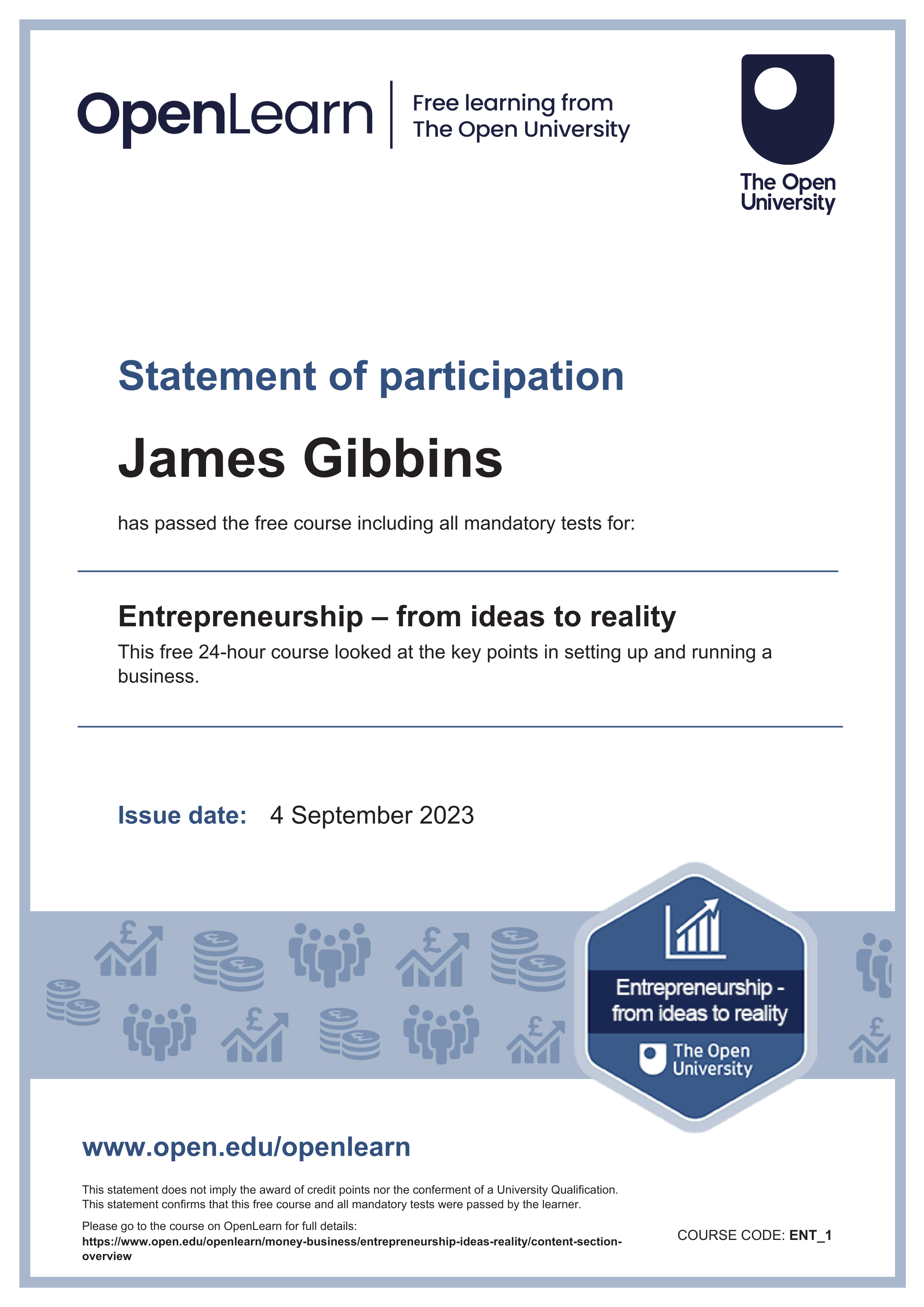
Ideas
- spotting an opportunity (e.g. a gap in the market)
- experiencing a problem and looking for a solution for it (e.g. an invention)
- being able to do something that others can’t (e.g. using a talent)
- being prepared to do something others don’t want to or can’t do (e.g. cleaning)
- having something that others might need or want (e.g. investing in plant or machinery for hire).
Sources of innovation
- Internal
- An unexpected happening
- A need for improvement in a proces
- An incongruous happening
- Changes in the indsutry, its structure of the market
- External
- Changes in population demographics
- Changes in society, in perception, mood, or meaning
- New types of knowledge
- The bright idea
- past and present work and experience
- hobbies and leisure interests
- qualifications and studies
- new markets/uses for existing products
- solving a persistent problem
- research and development (R&D)
- patents, licences and research institutes
- invention
- opportunities from new technologies
- opportunities from economic/market changes
- changes in consumer behaviour
- complaints and irritations expressed by potential customers
- changes in rules and regulations
- imitating an idea from a different locality
- imitating an idea from a different industry
- improving an existing product
- films, TV and radio
- books, magazines and the press
- trade shows, exhibitions and conferences
- business and social networks
- family and friends.
Discovery skills
- Observing
- Questioning
- Curiosity
- Connectivity
- Associating
- Incubation
- Creativity and innovation
Sometimes new or better solutions can come from:
- simplifying what is there
- adding to what is there
- emphasising different attributes
- making something available in one place that otherwise customers would have to seek in many different places.
Double diamond
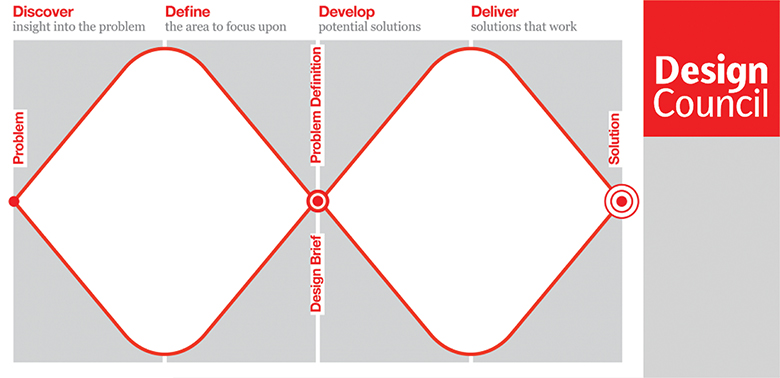
Disruption
- demand-led: customers demand change
- supply-led: company does something innovative (product, process, etc)
Checks
Is it suitable, feasible and acceptable?
Stats
In 2020, the government estimated around 6 million businesses in the UK, of which 5.94 million were small (0–49 employees) and 36,100 were medium-sized enterprises (50–249 employees). Only 7,800 businesses were deemed large (BEIS, 2020).
Micro-businesses are considered to be those with fewer than ten employees and a turnover of less than £2m. An SME may have up to 250 employees and a turnover of up to £25m, which in the UK represents over 99 per cent of all businesses (Rhodes, 2017).

The UK government prioritises financial services, science and technology, energy and health sectors. You may find that funding is more readily available in the priority sectors.
Essential activities
- Running the business (e.g. those ‘must do’ activities that mean you can create and settle invoices, pay your taxes, comply with regulations and so on)
- Getting the business (e.g. find, attract and keep customers)
- Delivering the business (i.e. create the product or service that customers want to use or buy).
Intellectual Property
- Patents
- Copyright
- Trademarks
- Trade secrets
Structures
- Sole trader
- Partnerships
- Limited liability partnerships
- Limited company
- Franchise
- Social businesses
- Social enterprise
- Community enterprise
- Co-operative
Support
- Entrepreneur Handbook on grants and funding for small businesses in the UK
- Local Enterprise Partnership network of growth hubs in England
- Social Enterprise UK covers all of the UK with members across the world
- Scotland
- Northern Ireland
- Wales
- Nesta incubators and accelerators (https://www.nesta.org.uk/blog/incubators-and-accelerators-an-updated-directory-for-the-uk/)
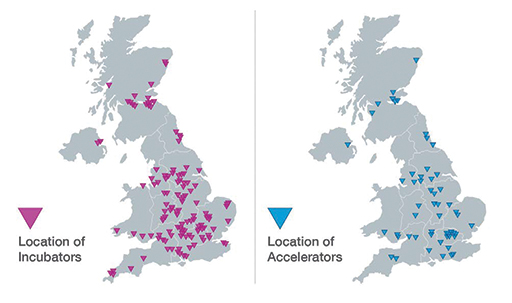
McKinsey’s value delivery system

Business model canvas
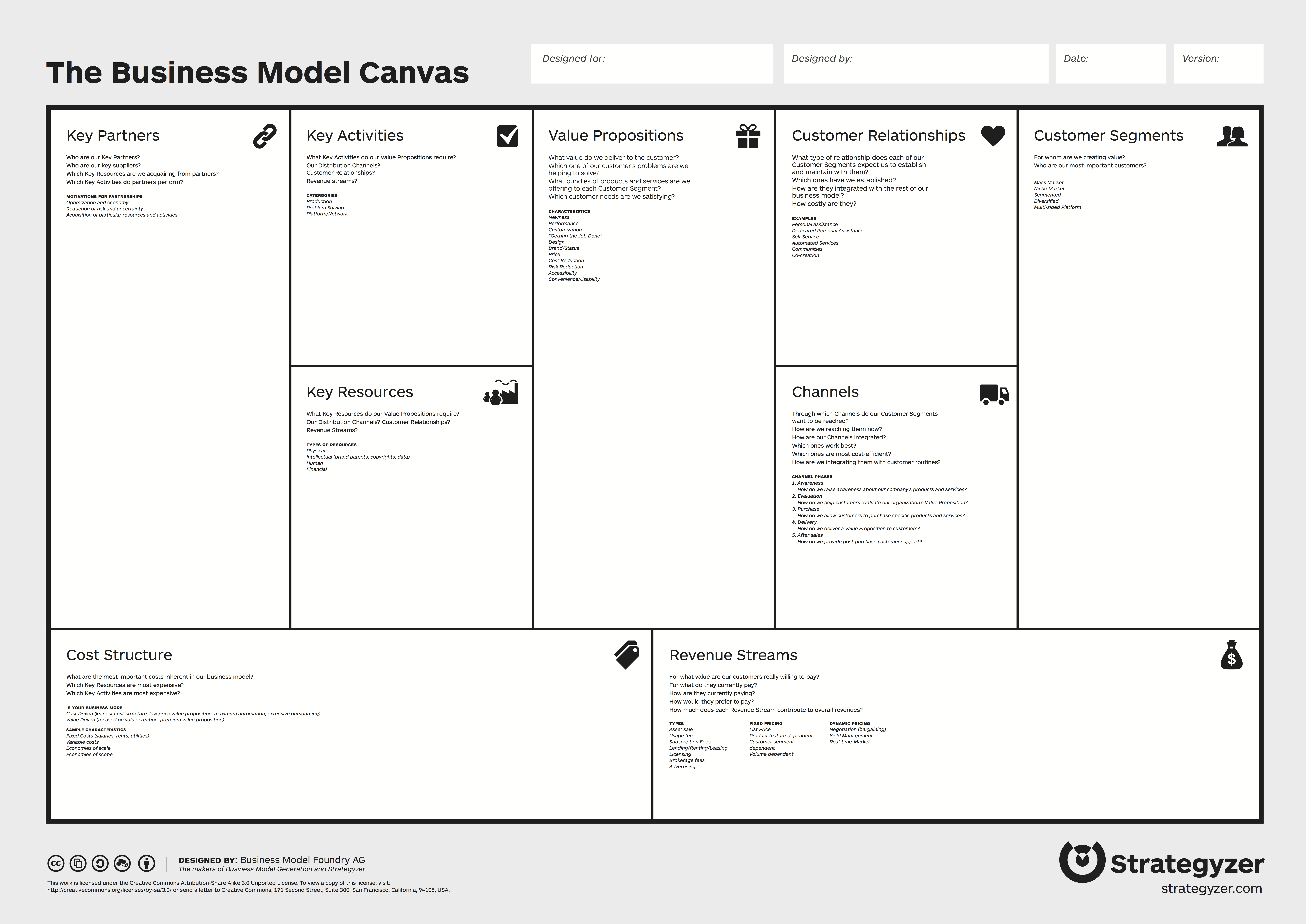
Dilemmas
- building confidence
- managed growth
- finding support
- pivoting (same vision, different strategy)
Customers vs consumers
- Customers are those that purchase a good or service.
- Consumers are those who use a product or service.
Market research
- Are the benefits of the product clearly communicated and believable?
- Does the product or service address a need or solve a problem?
- What other products or services can you imagine using to meet the need?
- What is the customer’s perception of how valuable the product or service would be to them?
- Would they use/purchase the product or service?
- How often would they use/purchase it and where would they look for it?
Customer segments

Marketing Mix
- Product
- Price
- Place
- Promotion
- People
- Process
- Physical evidence
Rogers’ technology adoption curve
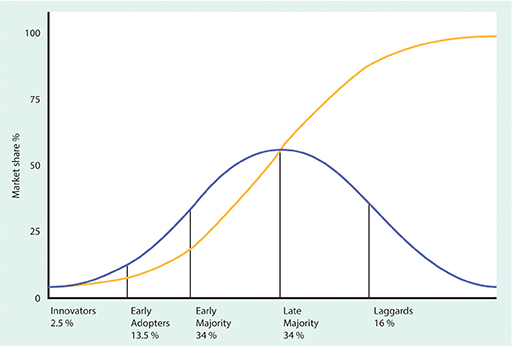
Mutual value
- Strategic: alignment with customer needs
- Economic: cost efficiency
- Operational: customer experience (systems)
- Behavioural: customer experience (humans)
Feature or benefit?
Be memorable
- Unique design (e.g. Polo mints)
- Life after consumption (e.g. quality container)
Value proposition
To [write in here the target group and the need you serve] our [state the product, service or brand here] is [describe the concept or product or service category] that [write in here your organisation or product or service’s unique or distinctive feature].
STEEPLE
- Social
- Technical
- Economic
- Environmental
- Political
- Legal
- Ethical
Porter’s Five Forces
- New entrants
- Substitutes/complements
- Bargaining power of suppliers/customers
Transformation
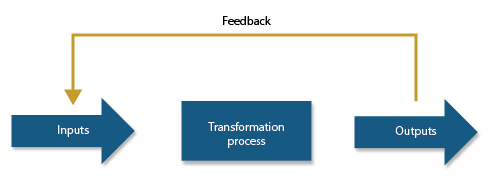
Inputs
- materials, or the physical things you might turn from one state into another
- information, which is part of the process or transformed through the process
- people, who through engagement are transformed in some way
Process
- facilities, such as land, premises, machines or other equipment
- people, such as staff or contractors directly involved in the transformation process.
- changes in
- physical characteristics of materials or customers (e.g. fruit into jam)
- the location of materials, information or customers (e.g. taxi, distribution services)
- the ownership of materials or information (e.g. retailing)
- storage or accommodation of materials, information or customers (e.g. warehousing services)
- the purpose or form of information (e.g. offering an online timetable)
- the physiological or psychological state of customers (e.g. a beautician, hairdresser, hospital or doctor).
Resources
- tangible – something physical that can be touched
- intangible – ‘know how’, your reputation, or work culture
- processes/sequence
- organisational structure
- motivation
- alignment
- human – the people you might work with and their skills
Competitive advantage
Sustained through:
- valuable
- inimitable
- rare
- organisational
Cash management
Considers:
- the agreements and terms you reach with suppliers and distributors, if applicable
- the speed at which you collect money in from customers
- the speed at which you pay money to suppliers
- the amount of cash you want to keep invested in inventory (the stock of goods that are being held for re-sale)
Funding
- Preference shares
- Loan stock or debentures
- Bonds
- Leasing
- Bank loans
- Bank overdraft
- Suppliers or trade payables
- Crowdfunding
- Investment-based or equity-based crowdfunding e.g Seedrs, Crowdcube
- Peer-to-peer lending or peer-to-peer crowdfunding e.g. Funding Circle, Thincats
- Reward-based crowdfunding e.g. Kickstarter
- Donation-based crowdfunding
- Invoice trading
- Mini-bonds
- IPO
- Private equity
- Angel investors (UK Business Angels Association) / venture capital
https://www.nesta.org.uk/feature/10½-tips-to-help-you-reach-your-crowdfunding-goal/
https://www.gov.uk/business-finance-support-finder
Pitch
- Vision and value proposition (elevator pitch)
- The problem
- The opportunity
- The solution
- Business model
- Early successes
- Marketing
- The team
- Financials
- The competition
- Planned investment
- Prototype or demonstration
Four factors critical to the success of start-ups
- Seek the advice and support of your local economic development agency
- Join the sector or industry body for your line of business and make use of their advice and referrals.
- Network with other entrepreneurs and small businesses to get their advice and referrals.
- Consult with a legal expert or accountant.
